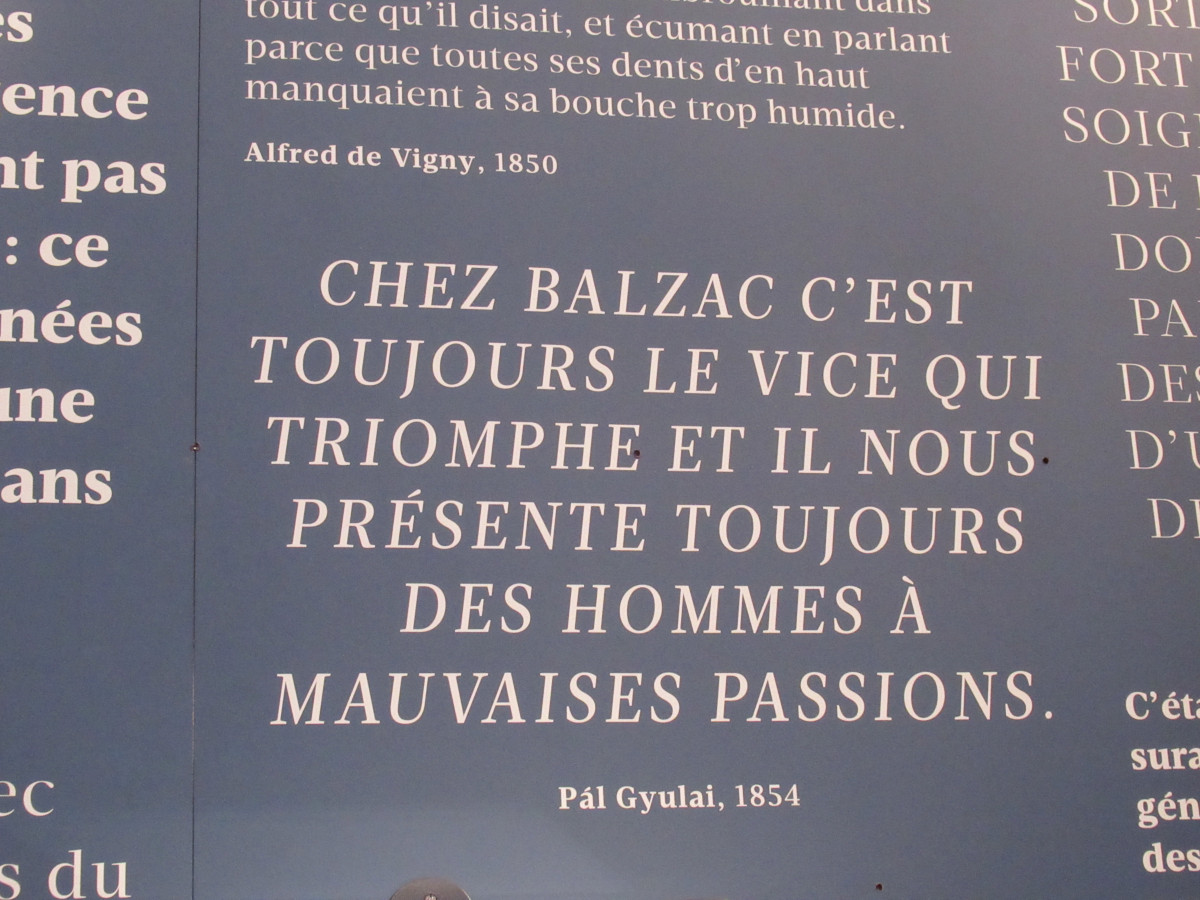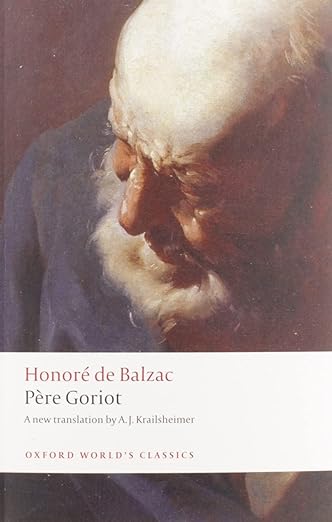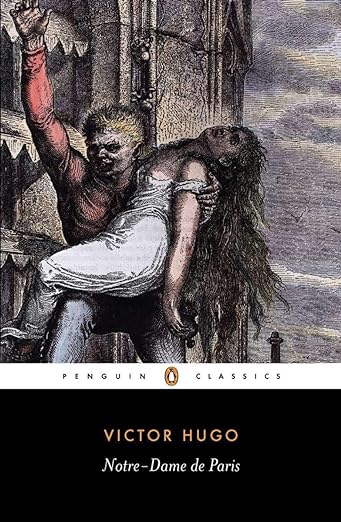We visit the two best-known literary houses in Paris, the Maison de Balzac in the 16th arrondissement and the Maison de Victor Hugo in the Place des Vosges and give an idea of what there is to see in each. Victor Hugo and Honoré de Balzac are two of France’s best-known 19th century authors and we’ve added very brief biographical notes on each author, along with a short summary of their work. There is much more detail on the podcast, including quotations from some of the key novels mentioned.
la maison de balzac


Balzac (1799-1850) lived in this house for seven years from 1840. The room where you feel closest to him is his study, an oppressive little room with dark red wallpaper where you can see his desk and some of the 5,000 books he owned – including the complete works of Jean-Jacques Rousseau. The guidebook describes it as ‘Balzac’s refuge, in the heart of the house’. Other rooms display manuscripts and letters, engravings which illustrated his books and various highlights such as his favourite turquoise walking stick (see below), coffee pot (ditto) and embroidered braces.
There is a little garden with a café and great views of the Eiffel Tower.
Balzac: the man


Honoré de Balzac was a caffeine-fuelled workaholic who spent 14-16 hours a day at his desk, scribbling away with a goose-quill pen. He also found time to frequent well-known Paris salons and to conduct affairs with a number of fashionable, often aristocratic, women. He added the ‘de’ to his name in a quest to seem more noble and was fond of finery – his ambition was to own 365 waistcoats. According to his biographer, Graham Robb, he also ‘invested in expensive trinkets and had a magnificent walking stick made with enormous tassels and an ebullition of turquoises around a sculpted golden knob.’ And yes, that’s on display in the museum.
balzac’s writing


Balzac’s main work, the Comédie Humaine consisted of 90 novels and novellas. It’s a kind of soap opera portraying a vast cast of characters from different strands of society and covering all walks of life: commerce and the arts, politics and scandal. A favourite theme was the ambitious young man who was trying – and often failing – to advance himself in the competitive world that was the Paris of his day. There are well over 2000 named characters altogether, many of whom reappear in lots of different novels. Balzac chronicled the society he lived in and was above all a supreme observer of people.
2 balzac novels to try


Le Père Goriot tells the story of an elderly man who is spending his dwindling fortune on two very unappreciative daughters. It’s kind of King Lear set in a shabby 19th century Parisian boarding house, with forays into the ball-gown-and-jewellery life of the two ingrates and their husbands. The tale of the impoverished young Eugène de Rastignac, newly arrived in Paris, who befriends them all is woven in too.
Eugénie Grandet relates the life of the Grandet family, led by the miserly Félix who sees no reason to let his wife and daughter have any say over the wealth he has squirrelled away. The plot thickens when two suitors appear for the daughter, Eugénie, one with money, one without. There’s bribery, betrayal and bankruptcy and lots to ponder about the relative values of love and money. It’s largely set in Saumur, south of the Loire, but the arrival of Félix’s nephew, Charles brings a Parisian dandy into the mix.
la maison de victor hugo


In this museum in the lovely Place des Vosges (4th arrondissement) you can wander the apartment where Victor Hugo lived and worked for 16 years in the 1830s and 40s. The rooms – his study, living rooms and bedroom – are as they were in Hugo’s day, and there are family portraits, manuscripts and artefacts galore, along with information panels telling the story of his life. Charles Dickens, who once visited Hugo here captured the atmosphere when he described the apartment as ‘a most extraordinary place, like an old curiosity shop’, filled with tapestries, old chests and a host of ornaments.
victor hugo: the man


Over his long writing career, Victor Hugo poured out poetry, historical fiction, political tracts, plays and novels. For foreign readers, the 2 stand-out works are The Hunchback of Notre Dame, published relatively early in his career, in 1831 and Les Misérables, published 30 years later.


the hunchback of notre dame
This grand medieval melodrama tells the story of Esmerelda, the men who betray her and the unlikely hero, the hunchback Quasimodo, who saves her after she is sentenced to death for a murder she didn’t commit. It was written in part as a plea for the saving of Notre Dame cathedral, which had fallen badly into disrepair and it did succeed in persuading the authorities to undertake a restoration programme. The novel is full of long descriptions of the cathedral’s gothic beauty which can make it heavy going, but it also gives us unforgettable characters and scenes.
Les Misérables
This epic tale of crime, punishment, justice and redemption was an instant success when Hugo published it in 1862 and thanks to the musical and films it has spawned it’s just as big a hit now. It was a cry for social justice, centring on the fate of such characters as Jean Valjean, imprisoned for 19 years for stealing a loaf of bread and the tragic Fantine, forced into prostitution and selling her hair and her teeth in a bid to raise money for her child. Most of all, it is the story of little Cosette, abandoned by her desperate mother. Will she ever be able to leave her circumstances behind and find happiness?
Listen to the POdcast
Reading suggestions
Balzac by Graham Robb
Le Père Goriot by Honoré de Balzac
Eugénie Grandet by Honoré de Balzac
Victor Hugo by Graham Robb
The Hunchback of Notre Dame by Victor Hugo
Les Misérables by Victor Hugo
links for this post
La Maison de Balzac
La Maison de Victor Hugo
Previous episode Buried in Paris
Next episode Memoirs of Paris
Last Updated on November 21, 2024 by Marian Jones






